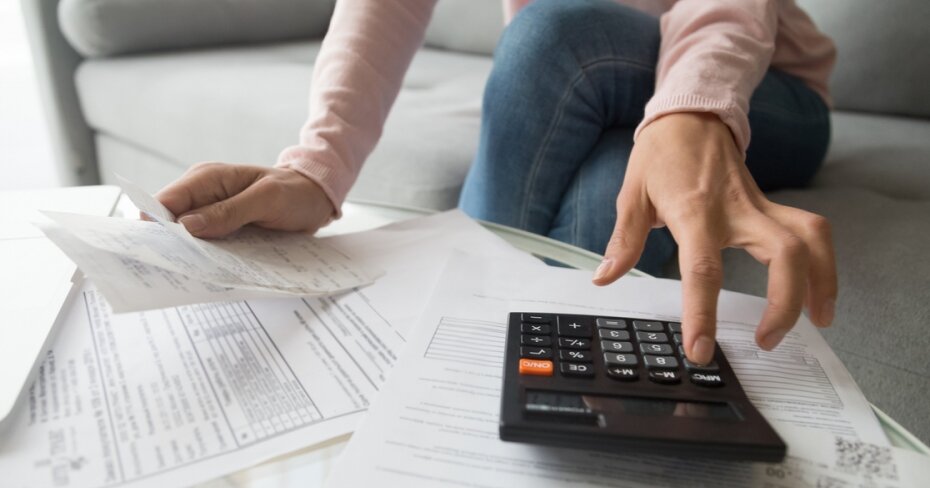When are lines of credit and personal loans a good idea?

At first blush, loans and lines of credit can seem like a friendlier credit card with their often higher limits and much lower interest rates. Who doesn’t like the sound of that?
These days, having debt is about as common as having a belly button. Every Canadian carries, on average, $22,837 in debt, according to Equifax Canada. And we’re also carrying more than just one form of debt.
“For the average person who comes into my office with, say, $50,000 in debts, they’ve probably got around $20,000 that is line of credit debt,” says Scott Terrio, manager of consumer insolvency at Hoyes, Michalos and Associates. “Ten or 15 years ago, it would have been a stack of credit cards. Now, there’s about one line of credit for every two credit cards.”
Personal loans and lines of credit are generally used for big purchases, like a new car, home renovation, or tuition. But because high-interest credit cards are the bane of most people’s existence, it’s not unusual to transfer a credit card balance, which is usually collecting interest at 19%, to a loan or line of credit that might be collecting interest at 6% and pay it off that way.
What’s the difference between the two? A personal loan is installment debt, meaning you borrow a lump sum of money upfront and then make fixed payments on either a weekly, biweekly, monthly, or semi-monthly basis for a set period of time. You pay interest on the entire amount of the loan, and there’s a predetermined end date for when the loan needs to be paid back. You can’t keep borrowing from it.
A line of credit, on the other hand, is more of a borrow-as-you-go kind of product, also referred to as revolving debt. The amount you borrow from a line of credit can fluctuate from month to month, and you’ll pay interest only on what you borrow. In other words, a line of credit is reusable.
At first blush, loans and lines of credit can seem like a friendlier credit card with their often higher limits and much lower interest rates. Who doesn’t like the sound of that?
But is using a line of credit or personal loan always a good idea? Like anything, it depends. Here are a few questions you should ask yourself before you apply for either of these products.
Do I have a specific purchase in mind?
Maybe you’re planning to renovate your kitchen. Or maybe you’re going back to school. In either of these instances, it makes good sense to take out a line of credit or personal loan if you can’t pay for it out of pocket. But if you’re applying for either of these products just so you’ll have access to that much more money, well, that’s a different story.
“An open-ended line of credit isn’t a great idea because there’s no plan to pay it back,” says Terrio, “other than the minimum payment. You’re just accumulating debt in small little bits here and there. That’s not a plan. You’re just going to pay that forever.”
Personal loans, of course, work a little bit differently. Once approved, that money is considered borrowed, and it must be paid back at a fixed monthly rate. That’s why it’s crucial to make sure you can handle the repayment before you sign on. Ask yourself first if you can still afford the monthly payments on your credit card(s). That will be a strong indicator of whether or not you can handle additional debt.
The other thing to remain mindful of is the interest rate structure. Are you getting a fixed- or variable-rate product? If it’s variable rate, then it’s tied to the Bank of Canada’s prime lending rate. So, if the Bank of Canada raises its rates, which it did three times last year, then you’re likely to see a spike in interest rates as well. That might mean that you can’t handle the monthly repayments after all.
Is a safety net what I’m really after?
This one applies almost exclusively to lines of credit. Since you only need to pay back what you use (plus interest, of course), lines of credit can often provide a sense of safety and backup — they’re good to have around in the event of an expensive emergency. “If the bank gives you a line of credit,” says Terrio, “you’re taking it. I don’t know what kind of superhuman will you would need to say no to that.”
A line of credit is surely an attractive debt cushion. But, as Terrio is quick to point out, it’s a "borrowed" cushion. "It’s savings that is lent,” he says. Rather than build an emergency fund yourself of, say, $10,000, with zero interest attached, we jump at the idea of being handed that $10,000 in the form of debt. “If you’ve got a $0 balance on a $10,000 line of credit, that’s a cushion,” says Terrio. “It can sit there forever. But most people can’t handle the temptation, and the banks know that. They know that if they give you $10,000, you’re going to use it.”
Lines of credit are often portrayed as safer, but, says Terrio, “you’re liable to take more under the impression that you can handle this $30,000 [on a line of credit] instead of this $15,000 on a Visa…. They know the lack of discipline is going to end up paying off for them.”
It’s not just the banks, either. Cash advance and payday loan companies like Cash Money are also in the line of credit game, advertising offers for lines of credit up to $10,000. The temptation is strong, but Terrio says, “The proper way to use a line of credit as a cushion is to not use it.” If what you’re after is a safety net, it’s probably wiser to just build savings.
Will I keep using my credit cards?
When you take out a personal loan, you add another monthly debt payment to the pile. Same goes for if you start using a line of credit. Ask yourself: Can I handle this? And am I going to keep using my credit cards?
It’s a cruel trick, but the more credit you use, the more credit banks want to give you. Banks like to put us through a sort of debt graduation ceremony, if you will. To start, they’ll give us a credit card, and once we run up the balance on that, they’ll offer us a line of credit at a lower-interest rate. “They never start you with a line of credit,” says Terrio. “They start you with credit cards and then they work you down.”
Banks will be banks. But the same can be said about consumers. For instance, when most people access a line of credit, says Terrio, they don’t also cut up their credit card(s). “They transfer the balance to the line of credit and then they keep the Visa,” says Terrio, which is not a wise move. It also doesn’t make a ton of fiscal sense, either, to keep using both. “If you’ve got $15,000 on a Visa and $30,000 on a line of credit,” says Terrio, “I’ll bet your monthly payments [for each] are the same.”
Is a lifestyle change in order?
Sometimes it makes sense to transfer your debt to a lower-interest rate product, though Terrio doesn’t actually see this happen all that often. Keep in mind, he sees people when they’re in a lot of trouble. “I think a lot of people who might be doing this aren’t in my office yet,” he says.
Instead, what he sees is people carrying multiple forms of debt — people who have maybe shifted their balances but didn’t make any concrete changes to their lifestyle or spending habits.
“The people I see, they’re making money, but it’s just not enough to pay their monthly bills,” says Terrio. “I’m not sure you’re solving someone’s problem by telling them to switch to a line of credit because a lot of the people we see have income problems. If you get to a certain level of debt, you’re past the tipping point, whether it’s an 18% or 12% interest rate.”
As is the case with any form of debt, the longer you wait to pay it back, the worse it gets. “Time is the enemy of debt,” says Terrio. “And the friend of the lender.”
About the author

Lisa is a senior editor in the personal finance space. Her work has appeared in Reader’s Digest, Toronto Life, Canadian Living and TVO. As a child, she diligently hoarded the $50 bills that fell out of her Christmas cards. Adult Lisa is working hard to resurrect those stockpiling tendencies.